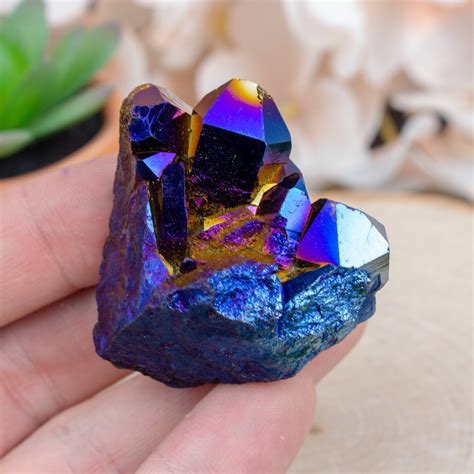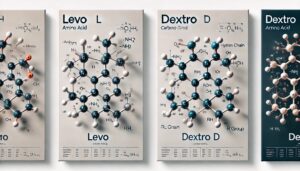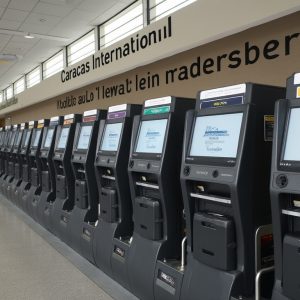THE NEW GREAT POWER RIVALRY:
THE STRUGGLE TO CONTROL STRATEGIC MINERALS
by Jeemes Akers
“A Tesla longer-range vehicle requires about ten pounds of cobalt, more than 400 times the amount in a cellphone…Congo—with more than two-thirds of the world’s cobalt production—is once again taking center stage as major automakers commit to battling climate change by transitioning from gasoline-burning vehicles to battery-powered ones. The new automobiles rely on a host of minerals and metals often not abundant in the United States or the oil-rich Middle East, which sustained the last energy era.”
Dionne Searcy, Michael Forsythe and Eric Lipton “A Power Struggle over Cobalt Rattles the Clean Energy Revolution”[1]
“The Energy Act of 2020 defines a ‘critical mineral’ [such as cobalt] as a non-fuel mineral or mineral material essential to the economic or national security of the U.S. and which has a supply chain vulnerable to disruption. Critical minerals are also characterized as serving an essential function in the manufacturing of a product, the absence of which would have significant consequences for the economy or national security.”[2]
U.S. Geological Survey List
“The American approach to policy is pragmatic; China’s is conceptual. America has never had a powerful threatening neighbor; China has never been without a powerful adversary on its borders. Americans hold that every problem has a solution; Chinese think that each solution is an admission ticket to a new set of problems. Americans seek an outcome responding to immediate circumstances; Chinese concentrate on evolutionary change. Americans outline an agenda of practical ‘deliverable’ items; Chinese set out general principles and analyze where they will lead. Chinese thinking is shaped in part by Communism but embraces a traditionally Chinese way of thought to an increasing extent; neither is intuitively familiar to Americans.”
Henry Kissinger,
World Order, 2014
Ms. KaLeigh Long was a professor’s dream as a college student. When I told her and a dozen or so of her classmates in our History of the Modern Middle East class at the College of the Ozarks that at least one of them would change the world and would enjoy the blessings of God for that special assignment in the final days, KaLeigh took that charge to heart. Over the years our paths crossed many times: she stayed with Ima and I on two occasions in Washington D.C. where the NPO she started lobbied for a variety of pro-life issues on the Hill; sudden calls from KaLeigh would find me at her side to talk to Taiwanese investors; or to provide my passport for a trip to Dubai, Eastern Europe or to talk with Congolese officials (all pulled down due to pandemic-related travel snags).
KaLeigh is a whirlwind of energy and ideas.
The latest crossing of our paths of destiny took place last week, in the early days of Ima and my trip of a lifetime out west. We stayed with KaLeigh in the beautiful Oklahoma city of Bartlesville, located less than 50 miles north of Tulsa on Route 65, and only 18 miles from the Kansas border. The city of less than 40,000 is known for its oil-related business activities: local oil man Frank Phillips first struck oil here and the city serves as headquarters of Phillips (66) Petroleum Co., one of the world’s largest oil companies.
KaLeigh has a nondescript office in one of the city’s buildings where she has embarked on a venture that places her at the crosshairs of today’s global competition for strategic minerals: nothing less than a plan to build our country’s first large-scale cobalt refinery. She asked me to pray a blessing on her Christian business venture at the company’s official launch attended by some forty friends, company executives and family. The dedication gathering coincided with an old-fashioned cook-out at KaLeigh’s house, located in the hill country outside of Bartlesville (where a county paved road gives way to a gravel road), within sight of KaLeigh’s parents ranch farm where her dad—Brian—operates a cattle business.
As I looked around the room, I was amazed by the eclectic set of individuals and talents that God has gathered to help further KaLeigh’s vision. Ryan Jones, for example, the father of one of her high school friends, is her right-hand man. He launched the ceremony with a beautiful verbal overview of Westwin Elements’ business plan, a formula for success looking forward, a realistic appraisal of the obstacles to be overcome, followed by a powerful prayer of protection. He finished with a heartfelt appeal to the others gathered in the room to hold him accountable. In the handful of days we were with KaLeigh, I developed a deep respect for Ryan, based largely on his humility—he is an award-winning market analyst, author and successful business entrepreneur in his own right—as well as his willingness to attribute his, and the company’s early success, to God’s blessings and favor.
Ryan is just one member of the talented group of individuals surrounding KaLeigh and her project: I could easily spend two paragraphs describing each of the eight to ten other individuals that are the heart and soul of Westwin Elements.
Cobalt?
Why is cobalt so essential? In the words of a prominent Congolese official to a group of investors in 2019: “Cobalt—it makes you dream.”[3]
Why is KaLeigh’s project so special?
In short, many of today’s cutting-edge technologies rely on cobalt, and other so-called strategic minerals, especially electric car batteries. Cobalt helps today’s lithium-ion batteries run longer without a charge. Cobalt is also found in cellphone batteries and—almost certainly—in the future for new generations of semiconductors, quantum computers and superconductors. Greg—a young man on KaLeigh’s staff from North Dakota and a walking Wikipedia of information on cobalt—explained the importance of cobalt to me during a conversation in KaLeigh’s living room the day before the dedication gathering. Cobalt has three unique properties, he told me: the mineral is heat resistant, anti-corrosive and possesses magnetic properties. I subsequently learned that cobalt is in such demand that the International Energy Agency expects a cobalt shortage by 2030, with other forecasters predicting major shortages as early as 2025.
The limits of modern technology are determined, in large part, by the power, storage capacity and expense of today’s batteries. Ten years ago, for example, EVs were powered by Nickel Metal Hydride (Ni-MH) batteries, but they were very heavy. The most popular batteries today are Lithium Ion (Li-Ion) batteries, well known for their charge-to-weight ratios. There are two types of Li-Ion batteries, characterized by the materials used in their cathodes—Lithium Nickel Manganese Cobalt Oxide (NMC) and Lithium Iron Phosphate (LFP) batteries.[4] NMC batteries are the industry preference, thus the increasing demand for cobalt.
Another technology driver that ensures a long future for strategic minerals is the ever-increasing demand for climate-friendly vehicles and their batteries. Couple that with the U.S. consumers’ demand for EVs that can travel long distances, and you have an insatiable desire by global automotive industries for strategic minerals like cobalt.
Meanwhile, (as we were dedicating KaLeigh’s new enterprise to God), about 7,500 miles away from KaLeigh’s gathering, in a wooded stretch of southeast Democratic Republic of Congo, in a place called Kisanfu, a company backed by the Chinese government—China Molybdenum—is busily extracting one of the largest and purest uptapped reserves of cobalt in the world.[5] Indeed, over the past five years, the company has bought two of Congo’s largest cobalt deposits.
Why are such rich deposits—an estimated 3.4 million metric tons of cobalt, more than half the world’s known supply—located in the Congo? According to a leading authority on the topic, the rich deposits started some eight hundred million years ago on the bed of a shallow ancient sea; over time the sedimentary rocks were buried and salty fluids containing metals seeped into earth, mineralizing the rocks. “Today,” he said, “the mineral deposits are ‘higgledy-piggledy folded, broken upside down, back-asswards, every imaginable geometry—and predicting the next buried deposit is almost impossible.’”[6] Such deposits have created a veritable land rush of miners to the remote part of the Congo.
What about the U.S.? Although very small deposits of cobalt exist in several U.S. states, they contain less than 1,000 metric tons of cobalt.[7] Bryce Crocker, CEO of an Australian mining firm (Jervois Mining) is now developing the only mine in our country to primarily produce cobalt, in Idaho’s Lemhi County (projected to open later this year).[8]
Congo is the major cobalt show and China has focused its activities there, and in neighboring countries: and that should come as no surprise. According to Ivan Glasenberg, Glencore’s CEO, “China Inc. has realized how important cobalt is … they’ve gone and tied up supply.”[9] Although there are no good estimates of the number of Chinese involved in cobalt-related activities in the African countries such as Congo, when Chinese visitors arrive in Congolese mining towns they are directed by signs in Mandarin directing them to Chinese-run hotels, shops and restaurants. Outside of work, the Chinese rarely mingle with the locals.[10]
It is all part of Beijing’s master plan. Chinese officials publicly announced, as early as 2015, its intention to dominate the world’s emerging clean energy economy. According to data provided by the Benchmark Mineral Intelligence, as of 2020, Chinese companies owned or financed 15 of the 19 cobalt-producing mines in Congo (the biggest alternative is Glencore, a Switzerland-based company that runs two of the largest cobalt mines in Congo). As a result, today China controls over 65% of the refining and processing of cobalt (as well as copper, nickel, rare earths metals and lithium), and the five biggest Chinese mining companies in Congo have lines of credit from state-backed banks that totaled $124 billion. For example, in 2016, China Molybdenum took control of Tenke Fungurume, a mine that on its own produces twice as much cobalt as any other country in the world (over half the $2.65 billion purchase price was provided by Chinese state-owned banks). The China-Congo cobalt frenzy has made for strange bedfellows: at one point it drew in a Chinese-based private equity firm linked to Hunter Biden.[11]
KaLeigh appeared non-plussed when I mentioned to her China’s overwhelming advantage in the area of cobalt extraction in the Congo and elsewhere. “There will always be cobalt-laced materials available,” she told me, “it is the lack of refineries here in the U.S. and elsewhere in the west that is most concerning.”
Indeed, it is.
Why is KaLeigh doing it? She has a patriotic goal for sure—America is falling further and further behind in the race for cobalt and other strategic materials, all of which are vital to today’s sophisticated weaponry. She also hopes, obviously, to make money on the venture: just enough to provide for her two children and staff, with the bulk of future earnings earmarked to fund a nonprofit foundation benefitting young people in the Congo (many of whom are forced to toil in unhealthy and unsafe cobalt mining conditions).[12] KaLeigh—a child of Oklahoma—also hopes to set up the operation in her home state. Finally, and importantly, she hopes to demonstrate how a female-led company can succeed based on Christian principles.
When Ima and I first visited KaLeigh in her office, she was flitting around like a busy bee: one moment on the phone with bankers and Oklahoma politicians, at another moment talking with Ryan and others about an upcoming visit to potential donors in West Texas or interviewing future team members. She ran at the pace of a high-speed sewing machine from early in the morning until late at night.
One morning, I caught her on the back porch with her children. “KaLeigh, you know how much we love you,” I told her, looking straight into her eyes, “but you’ve got to slow down. Trust those God has gathered around you. It will not do your children, or your company, any good if you have a physical breakdown because you are burning the candle at both ends.”
“I’m not sure I know how to slow down,” she confessed.
So, I prayed for her: for wisdom, for supernatural rest, and for her physical well-being and emotional stamina.
In truth, KaLeigh will need all her strength for battles that lie ahead. She and her dedicated band of fellow-travelers are small fish—and newly arrived fish at that—in a cobalt-laced ocean filled with sharks. Fierce Chinese sharks. Well-funded and government-backed predator-companies that have a history of playing rough with competitors and frenzy-feeding on smaller fish in the waters. One of these sharks, and the unquestioned world leader in refining cobalt, is the Ningde-based megacorporation Contemporary Amperex Technology Co. Limited Ningde Shidai [hereafter CATL]. CATL is a Chinese battery manufacturer and technology company, founded eleven years ago, that specializes in manufacturing lithium-ion batteries for EVs and energy storage systems, as well as battery management systems. CATL—with a market value of almost $200 billion—controls almost 40 percent of the world’s lithium-ion battery production. The company has over 30,000 employees and operates several manufacturing facilities in China (CATL just opened a plant in Erfurt, Germany); and has major R&D facilities in Ningde, Shanghai and other Chinese cities, as well as Munich, Germany. CATL specializes in providing EVs in the international market and has collaborative agreements with Tesla, Ford, Volkswagen, BMW, Toyota, Hyundai, Honda, and Volvo, among others.
CATL is led by one of China’s most interesting techno-titans, Zeng Yuqun (Robin Zeng),[13] now in his early 50’s and one of China’s richest billionaires (as of March 2022, his fortune was estimated at $46.8 billion). Zeng—the so-called “Battey King,” holds a Ph.D. in physics and has a close working relationship with Elon Musk.[14]
What is CATL’s link to the cobalt deposits in the Congo? In mid-2021, CATL acquired a $137 million dollar stake in the mines at Kisanfu.[15]
The dangers in competing with techno-giants like CATL are obvious. But KaLeigh’s company has four advantages. First, Ryan has put together a nimble, sound business plan that attracts investors of all stripes. KaLeigh told us, during the dedication ceremony, that the business is valued at $1.5 billion.
Secondly, KaLeigh has partnered with an individual that has a unique proprietary technology to refine cobalt and other strategic materials.
Thirdly, the United States—belatedly—is starting to recognize the seriousness of a shortage of strategic materials and China’s domination of processing and refineries. There is a strong push underway to restore our stockpile of strategic minerals—such holdings were valued at nearly $42 billion in today’s dollars at its peak during the beginning of the Cold War in 1952. That value has plummeted to $888 million as of last year following decades of congressionally authorized sell-offs to private sector customers (including 26 million pounds of cobalt). The Defense Department submitted a legislative proposal to Congress asking for the House Armed Services Committee to authorize $235.5 million in the FY 2023 budget to shore up the U.S. strategic minerals stockpile.[16]
Finally, after years of having everything go their way, Chinese companies are starting to face local and legal headwinds: Congolese officials are carrying out broad reviews of past mining contracts as part of broader anti-corruption efforts and questioning whether Chinese companies are following through on commitments to improve local infrastructure, roads, bridges and power plants. Congo’s president, Felix Tshisekedi, named a commission in August 2021 to investigate allegations that China Molybdenum has cheated the government out of billions of dollars of royalty payments (the company risks being expelled from the country). Moreover, Chinese companies are facing broad allegations of safety concerns (dismissed by some Chinese officials as “the gaming of greater powers”). During my discussions with KaLeigh on the topic, she said she was pleasantly surprised by Tshisekedi, especially compared to his predecessor, Joseph Kabila, (who had assumed office following the assassination of his father, flaunted his close ties to Beijing, including a state visit there in 2005 to enlist Hu Jintao’s help to turn around Congo’s economy. Kabila had received military training in China).[17]
During my private talks with KaLeigh and Ryan, I emphasized the need for the company to be flexible enough to benefit from future technological developments. CATL, for example, with a legion of over 5,000 researchers, is already moving forward in developing sodium ion batteries and setting up supply chains for the new technology beginning as early as next year. The scarcity of cobalt—used in today’s nickle-cobalt-aluminum and nickle-cobalt-manganese batteries—is one of the primary drivers for the new battery technology. Sodium-ion batteries would contain no cobalt, lithium or nickle. The company also revealed a battery pack that integrates sodium-ion and lithium-ion batteries.[18] For KaLeigh and her company, flexibility will be essential for future survival.
As a final note: this missive is dedicated to KaLeigh’s vision and the extraordinary group of energetic and talented individuals arrayed around her—Ryan, Brian, Greg, Joanna, Tim, Dave, Katy, and Danny. I apologize if I have overlooked some others. Ima and I were so grateful to be included in their world in Oklahoma for a handful of days. Their energy, commitment and vision are infectious.
Our thanks also to KaLeigh’s extended family—particularly her father Brian and mother Martha—who shared their home with us, introduced us to some of their amazing friends, took Imogene to her first rodeo (and me to my first cattle auction), and included us in some of the most amazing discussions of eschatology I’ve ever been involved in.
Please join me in praying for KaLeigh’s well-being and the future success of her cobalt refinery. Our country desperately needs for business ventures such as KaLeigh’s project to succeed; if for no other reason than to start the process of reversing China’s stranglehold on the production and refining of strategic minerals.
[1] Dionne Searcy, et.al., “A Power Struggle over Cobalt Rattles the Clean Energy Revolution,” The New York Times, Dec. 7, 2021.
[2] National News Release, “U.S. Geological Survey Releases 2022 List of Critical Minerals,” USGS, Feb 22, 2022.
[3] Nicolas Niarchos, “The Dark Side of Congo’s Gold Rush,” The New Yorker, May 24, 2021. Niarchos is currently working on a book about the global cobalt industry.
[4] C. Iclodean, et.al., “Comparison of Battery Types for Different Electric Vehicle Types,” IOP.
Conference Series, Materials, Science and Engineering 252, Oct 2017.
[5] Searcy, “A Power Struggle over Cobalt.” China Molybdenum bought the Kisanfu site from the American firm Freeport-McMoRan.
[6] Niarchos, “The Dark Side.”
[7] USGS, “Cobalt Deposits in the United States,” Jun 1, 2020.
[8] Luiza Savage, “How America got outmaneuvered in a critical mining race,” Politico, Dec. 2, 2021.
[9] Niarchos, “The Dark Side.”
[10] Ibid.
[11] Ibid.
[12] For an in-depth discussion of cobalt mining abuses in the Congo, see Niarchos, “The Dark Side.”
[13] Profile, Robin Zeng, Forbes, 2022. As of mid-August 2022, Zeng’s wealth ranked him #26 on the world’s list of wealthiest men and #3 in China and Hong Kong. Zeng built CATL’s headquarters in his hometown of Ningde.
[14] Davis Tyler Dudley, et. al., “CATL: China’s Battery King,” Harvard Business School, May 6, 2021,
[15] Niarchos, “The Dark Side.”
[16] Bryant Harris, “Congress and Pentagon seek to shore up strategic mineral stockpile dominated by China,” Defense News, May 23, 2022.
[17] By 2007, Kabila made a six-billion-dollar infrastructure deal with China that included a provision allowing the Chinese to extract six hundred thousand tons of cobalt. See, Niarchos, “The Dark Side.”
[18] Yilei Sun et.al., “China’s CATL unveils sodium-ion battery—a first for a major car battery maker,” Reuters, Jul 29, 2021.




